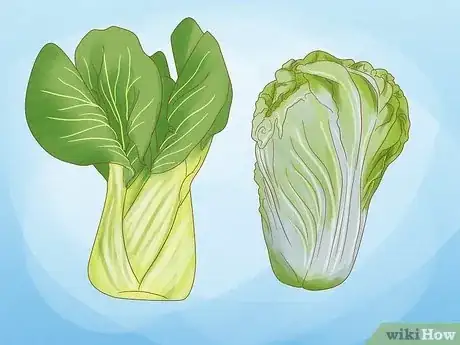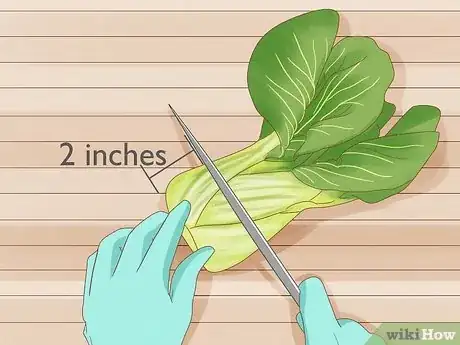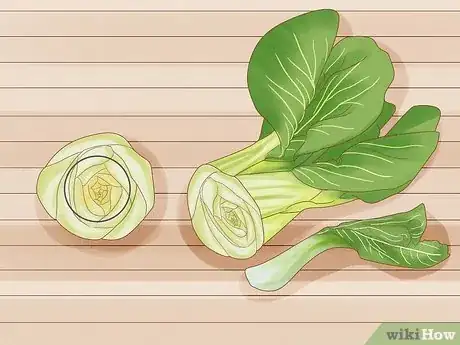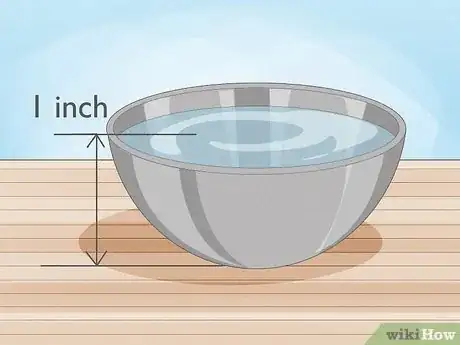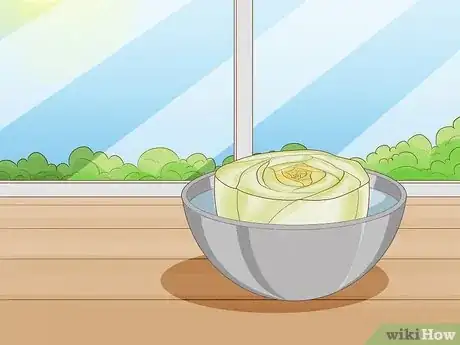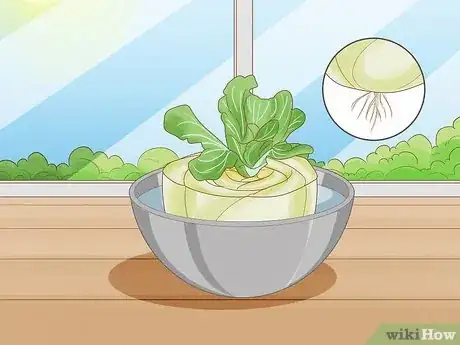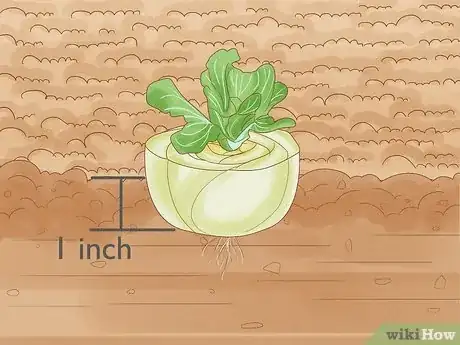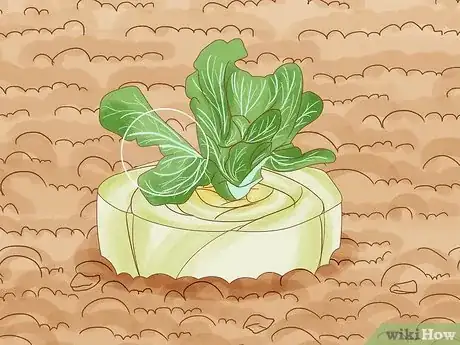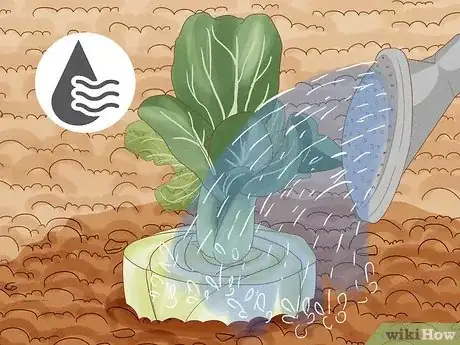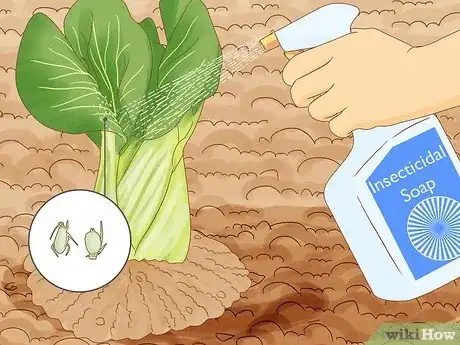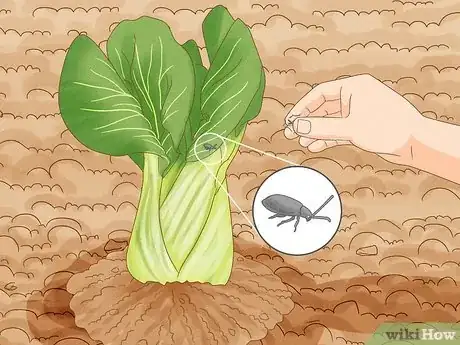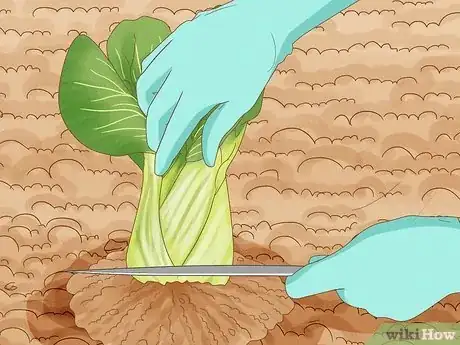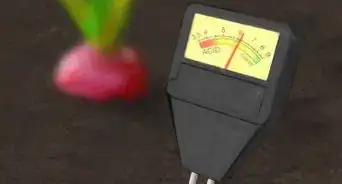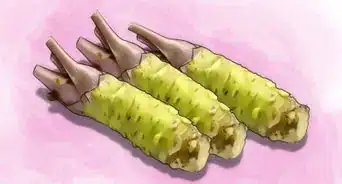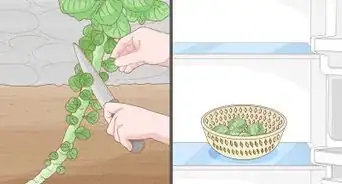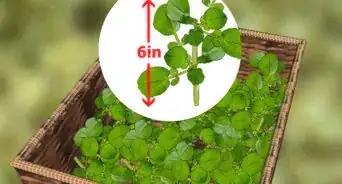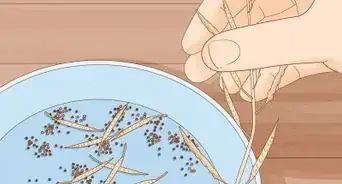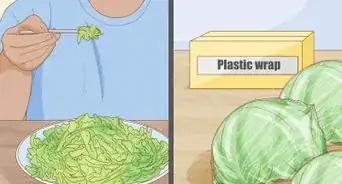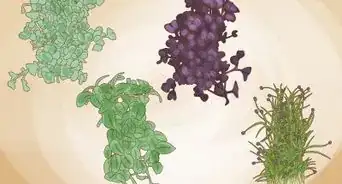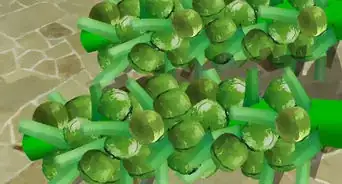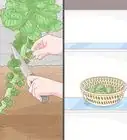X
wikiHow is a “wiki,” similar to Wikipedia, which means that many of our articles are co-written by multiple authors. To create this article, volunteer authors worked to edit and improve it over time.
This article has been viewed 50,474 times.
Learn more...
If you want to turn your head of bok choy into a new bok choy plant, you can! Whether you're a gardener or just experimenting, this article will explain how easy it is to regrow bok choy.
Steps
Part 1
Part 1 of 4:
Cutting
-
1Choose your bok choy. Some types you can use are: Baby bok choy, Chinese cabbage bok choy, etc.
-
2Cut the bok choy right where the stems branch into leaves. Or in other words, 2 inches from the bottom up.Advertisement
-
3Examine the bok choy. If there are yellow leaves in the middle of the bottom this means that your bok choy is ready to grow!
Advertisement
Part 2
Part 2 of 4:
Regrowing
-
1Fill a container with water. You can be creative with this one. Add at least 1 inch of water, but you can add a lot of water until the bok choy is floating!
-
2Place the bok choy in the water. The bok choy can then be situated anywhere as long as it gets sunlight. The bok choy can be a very unique edible plant for decoration or as a house plant.
-
3Remember to change the water daily, about every 2-3 days to maintain water freshness. You can also spray the middle of the bok choy (where the leaves sprout):
Advertisement
Part 3
Part 3 of 4:
Bumps, Roots, and Leaves
-
1Examine the roots. Before a bok choy grows roots, it will have white bumps where the roots sprout from. This is perfectly normal; when you see roots sprouting from the bumps wait 1 day before planting.
-
2Plant the bok choy whenever you have roots. Make sure the roots and base are at least 1 inch underground. Sometimes when the bok choy has roots the will have a dark tint. This just means that the roots are actively growing.
-
3Look at the leaves. A regrowing bok choy will commonly have "ripped-looking" leaves. This is also perfectly normal and as the plant grows the leaves will become more full.
Advertisement
Part 4
Part 4 of 4:
Care and Pests
-
1Water the bok choy. Bok choys need at least 1 inch or water whenever the soil is dry to the touch. The water can be poured straight down on the bok choy or around the base. Make sure not to overwater. As the bok choy grows older you can add more dirt around it or just bury it with top and leaves exposed.
-
2Keep an eye out for aphids on the bok choy. You must kill them immediately. Aphids will literally drain the life out of bok choys. Use an insecticidal soap spray to kill them. They especially like to hide under the leaves. You can get this spray at a gardening or home store.
-
3Look for flies. Black flying bugs occasionally appear flying or on bok choy. Wave your hands near them so they fly then squash them. These bugs can multiply quickly and lay eggs on your plant killing them.
-
4Use clean cutting tools to cut off the leaves for harvesting.
Advertisement
Community Q&A
-
QuestionOnce I regrow bok choy or kale, can I cut a few leaves off while it's growing without killing the plant, and will those leaves grow back? Also, where is it best to cut the leaves?
 RevadCommunity AnswerI take some regrown leaves off of my kale all of the time and they do just fine. I only take about 20-30% in one harvest and leave the rest so they can gather energy and light for the plant. I cut them close to the stalk so they don't waste energy keeping the stem with no leaf alive.
RevadCommunity AnswerI take some regrown leaves off of my kale all of the time and they do just fine. I only take about 20-30% in one harvest and leave the rest so they can gather energy and light for the plant. I cut them close to the stalk so they don't waste energy keeping the stem with no leaf alive. -
QuestionHow long does this process of regrowing the scraps usually take?
 Community AnswerTo fully grow back, about 3-4 months/ But they grow fast, in a week you'll see growth.
Community AnswerTo fully grow back, about 3-4 months/ But they grow fast, in a week you'll see growth.
Advertisement
- The longer the bok choy is in water the leafier it will get.
- Sometimes one of the bok choy base stems will rot, so snap them off using your fingers.
- You can also leave your bok choy plants outside on a cold winter night to kill aphids, remember to bring them in if it gets too cold.
About This Article
Advertisement
